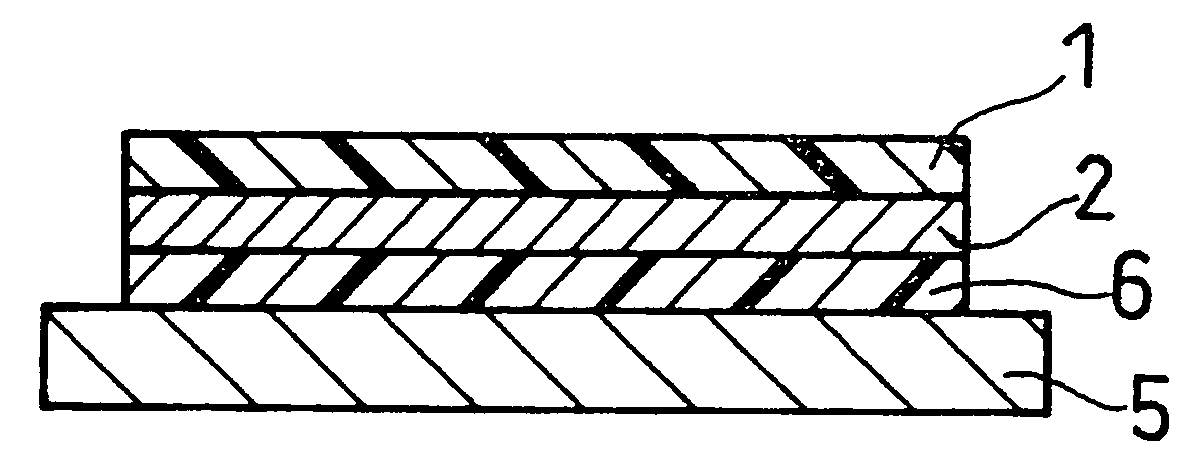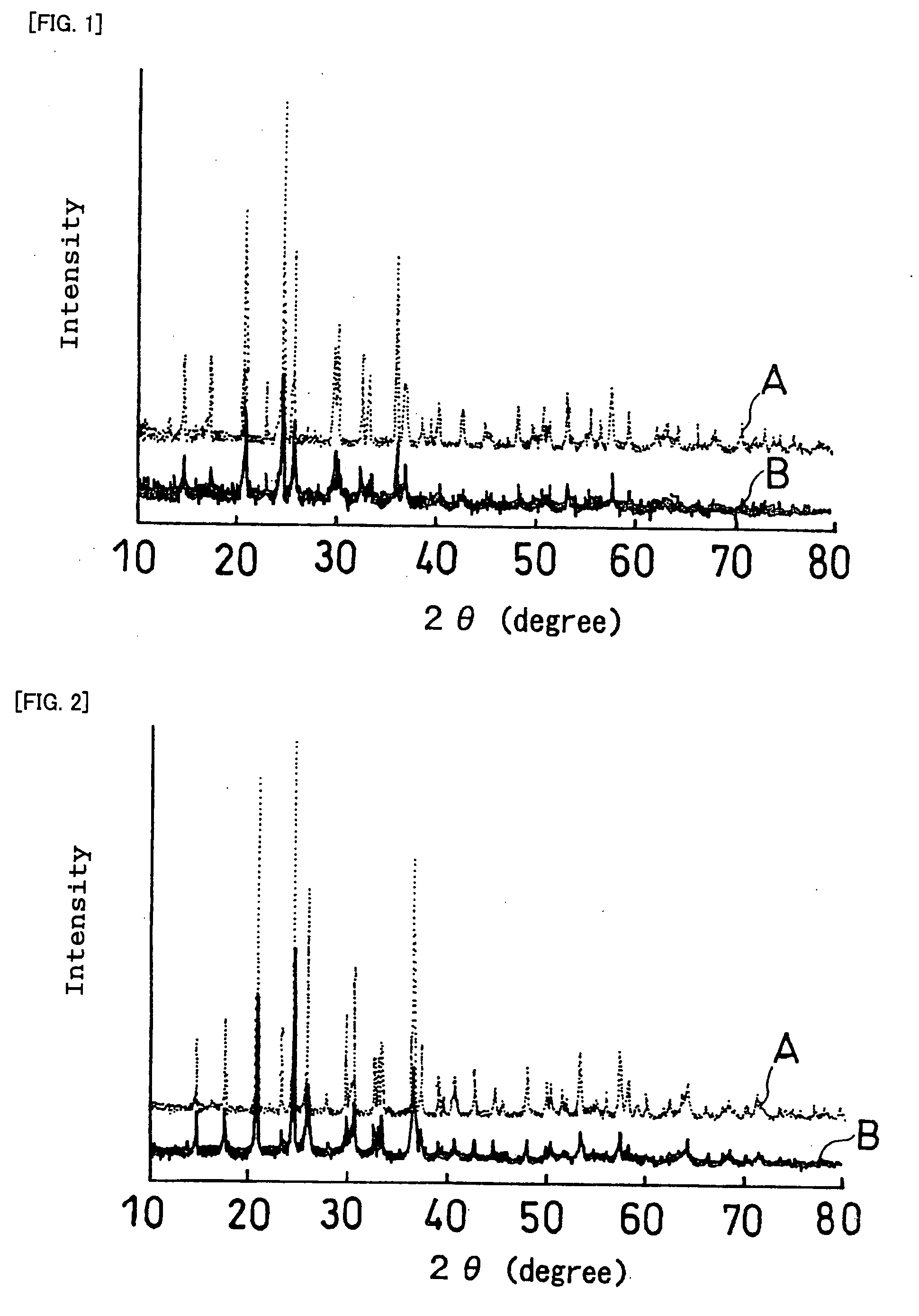Laminate Including Active Material Layer and Solid Electrolyte Layer, and All Solid Lithium Secondary Battery Using the Same
a technology of active materials and solid electrolytes, which is applied in the direction of secondary cell manufacturing, final product manufacturing, and grouping of flat cells, etc., can solve the problems of reducing the life of active materials, reducing the conductivity and power density of liquid electrolytes, and reducing the safety of liquid electrolytes. , to achieve the effect of improving the life characteristics of active materials, small internal resistance, and high operating voltag
- Summary
- Abstract
- Description
- Claims
- Application Information
AI Technical Summary
Benefits of technology
Problems solved by technology
Method used
Image
Examples
example 1-1
[0298] When a sintering process is used to produce a first laminate or a second laminate having an electrochemically active interface between an active material and a solid electrolyte as described above, it is necessary that side reactions other than sintering not occur during the sintering at the sintered interface between the active material and the solid electrolyte. Thus, the reactivity between active materials and solid electrolytes upon heating at 800% was examined.
[0299] First, the reactivity between a positive electrode active material and a solid electrolyte is described.
(Sintered Body 1)
[0300] LiCoPO4 was used as the positive electrode active material, and Li1.3Al0.3Ti1.7(PO4)3 was used as the solid electrolyte. The positive electrode active material and the solid electrolyte were separately crushed in a ball mill to make the particle size approximately 1 μm. These powders were mixed in a ball mill in a weight ratio of 1:1 and shaped into a pellet of 18 mm in diameter...
example 1-2
[0328] The following batteries and comparative batteries were produced, and charged and discharged under predetermined conditions to obtain their discharge capacities.
(Battery 1)
[0329] First, a solid electrolyte powder represented by Li1.3Al0.3Ti1.7(PO4)3 and a positive electrode active material powder represented by LiCoPO4 were prepared. The solid electrolyte powder was mixed with polyvinyl butyral resin serving as a binder, n-butyl acetate as a solvent, and dibutyl phthalate as a plasticizer, and the mixture was mixed together with zirconia balls in a ball mill for 24 hours, to prepare a slurry for forming a solid electrolyte layer.
[0330] A slurry for forming a positive electrode active material layer was also prepared in the same manner as the solid electrolyte layer slurry.
[0331] Subsequently, the solid electrolyte layer slurry was applied onto a carrier film 1 composed mainly of polyester resin by using a doctor blade. The applied slurry was then dried to obtain a solid e...
example 1-3
[0384] Next, the packing rate of the laminate was examined.
(Battery 5)
[0385] A battery 1 was produced in the same manner as the battery 1, except that sintering was performed by heating to 850° C. at a heating rate of 400° C. / h.
(Reference Battery 6)
[0386] A reference battery 6 was produced in the same manner as the battery 1, except that sintering was performed by heating to 800° C. at a heating rate of 400° C. / h.
[0387] The battery 1, the battery 5, and the reference battery 6 were examined for their impedance at 1 kHz.
[0388] Table 3 shows the packing rates of the laminates used in the battery 1, the battery 5, and the reference battery 6 and the impedances of these batteries. With respect to the packing rates, the packing rates as shown in Table 3 are obtained on the assumption that the laminate is composed only of Li1.3Al0.3Ti(PO4)3 in the same manner as in Example 1-2.
TABLE 3Packing rate(%)Impedance (Ω)Battery 1833010Battery 5723520Ref. battery 655144000
[0389] As shown ...
PUM
| Property | Measurement | Unit |
|---|---|---|
| Temperature | aaaaa | aaaaa |
| Temperature | aaaaa | aaaaa |
| Fraction | aaaaa | aaaaa |
Abstract
Description
Claims
Application Information
 Login to View More
Login to View More - R&D
- Intellectual Property
- Life Sciences
- Materials
- Tech Scout
- Unparalleled Data Quality
- Higher Quality Content
- 60% Fewer Hallucinations
Browse by: Latest US Patents, China's latest patents, Technical Efficacy Thesaurus, Application Domain, Technology Topic, Popular Technical Reports.
© 2025 PatSnap. All rights reserved.Legal|Privacy policy|Modern Slavery Act Transparency Statement|Sitemap|About US| Contact US: help@patsnap.com



